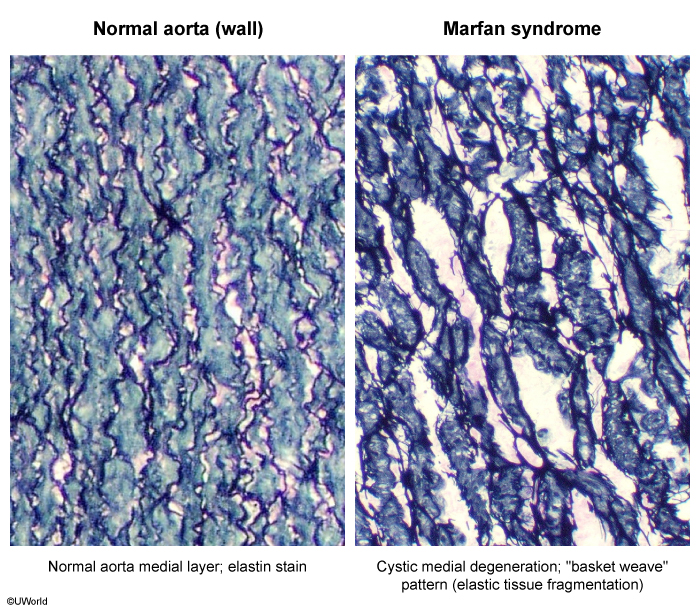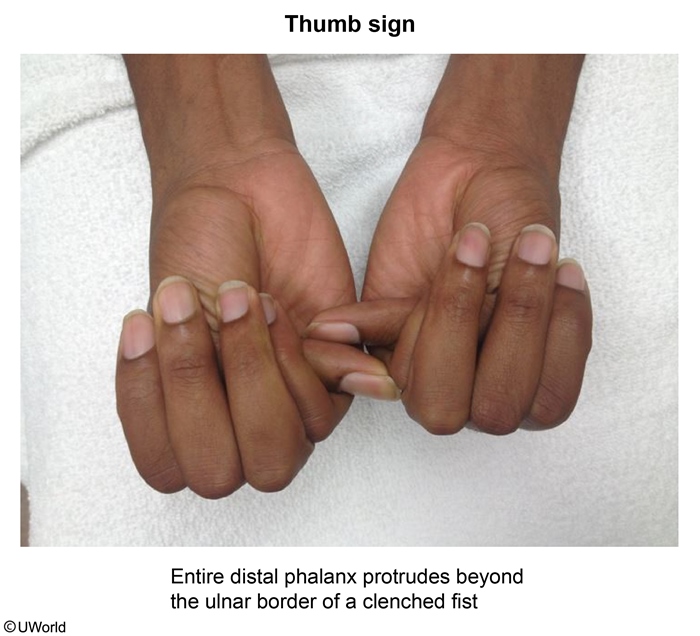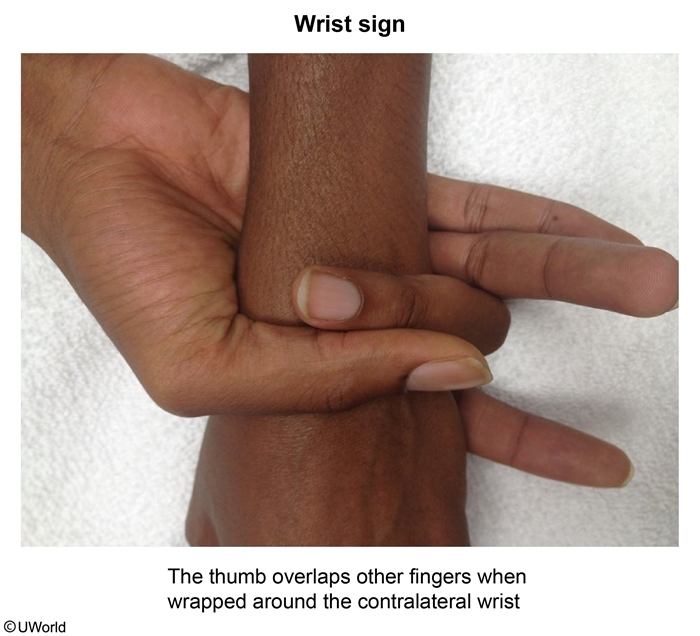Marfan Syndrome
Article Sections
Introduction
Marfan syndrome is an inherited connective tissue disorder primarily affecting the cardiovascular, musculoskeletal, and ocular systems. Early recognition and management are critical due to the risk of life-threatening complications such as aortic dissection.
Pathophysiology
Marfan syndrome most often results from an autosomal dominant mutation of the gene that encodes fibrillin-1, a major component of microfibrils that supports elastic fibers and helps maintain connective tissue integrity.
Fibrillin-1 is found throughout the musculoskeletal and cardiovascular systems (eg, aorta, mitral valve) as well as in the zonular fibers that suspend the ocular lens in place. Normally, fibrillin-1 binds to and inactivates transforming growth factor-beta (TGF-beta), a protein that contributes to the degradation of elastic fibers and other extracellular matrix components by activating matrix metalloproteinases (
Continue Learning with UWorld
Get the full Marfan Syndrome article plus rich visuals, real-world cases, and in-depth insights from medical experts, all available through the UWorld Medical Library.
Figures
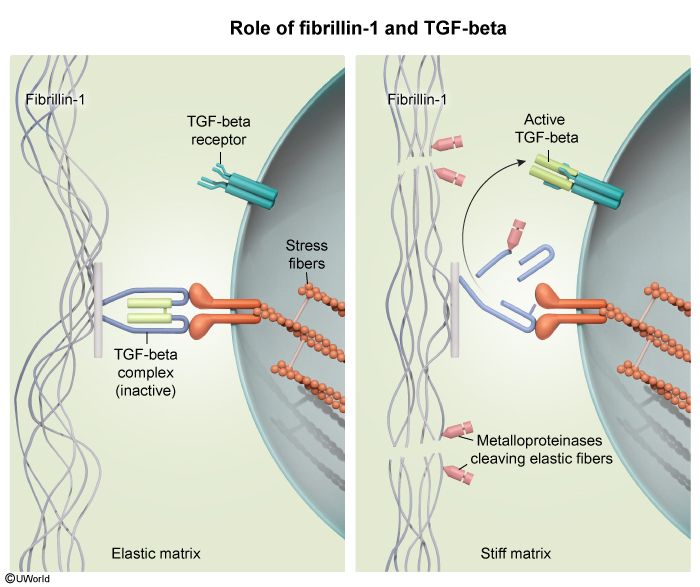
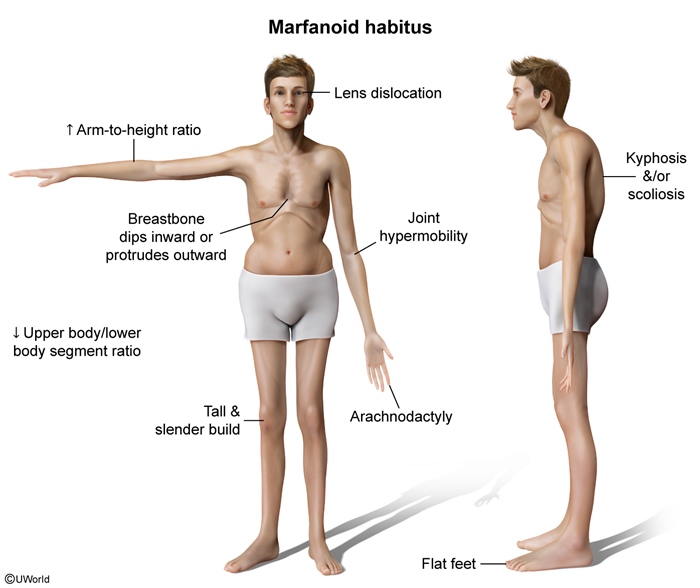

Images
